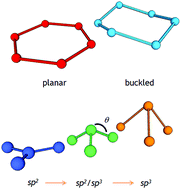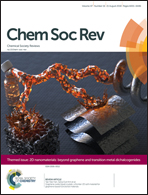Silicene, silicene derivatives, and their device applications
Abstract
Silicene, the ultimate scaling of a silicon atomic sheet in a buckled honeycomb lattice, represents a monoelemental class of two-dimensional (2D) materials similar to graphene but with unique potential for a host of exotic electronic properties. Nonetheless, there is a lack of experimental studies largely due to the interplay between material degradation and process portability issues. This review highlights the state-of-the-art experimental progress and future opportunities in the synthesis, characterization, stabilization, processing and experimental device examples of monolayer silicene and its derivatives. The electrostatic characteristics of the Ag-removal silicene field-effect transistor exhibit ambipolar charge transport, corroborating with theoretical predictions on Dirac fermions and Dirac cone in the band structure. The electronic structure of silicene is expected to be sensitive to substrate interaction, surface chemistry, and spin–orbit coupling, holding great promise for a variety of novel applications, such as topological bits, quantum sensing, and energy devices. Moreover, the unique allotropic affinity of silicene with single-crystalline bulk silicon suggests a more direct path for the integration with or revolution to ubiquitous semiconductor technology. Both the materials and process aspects of silicene research also provide transferable knowledge to other Xenes like stanene, germanene, phosphorene, and so forth.

- This article is part of the themed collection: 2D nanomaterials: beyond graphene and transition metal dichalcogenides


 Please wait while we load your content...
Please wait while we load your content...
